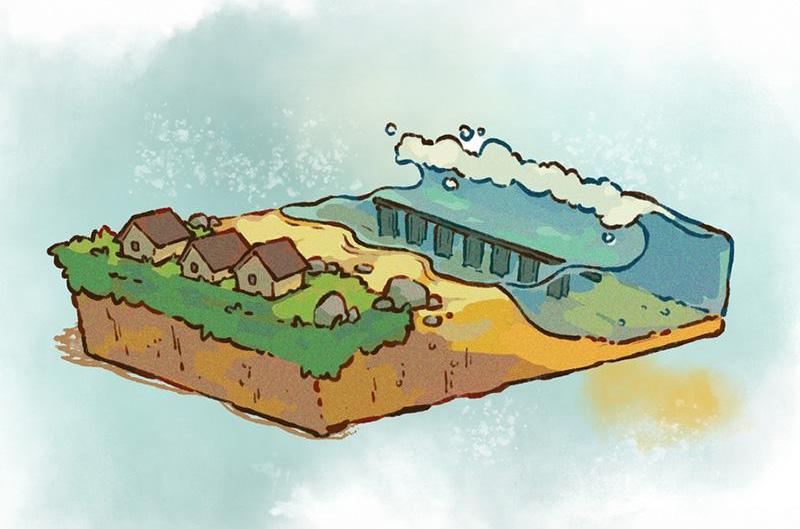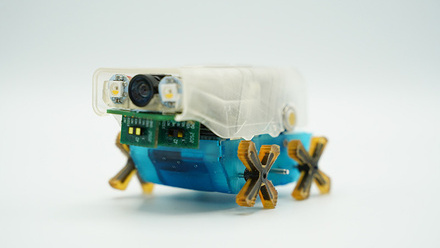Architected reefs could fortify coastlines
An architected, artificial reef could minimise the risk of flooding and erosion facing global coastal communities, while using 10 times less cement than is presently possible.

Scientists have long warned about the risk of coral bleaching as sea temperatures rise due to climate change. Ultimately, the reef structure breaks down and it can no longer provide a natural barrier to protect coastlines from strong waves.
A team at Massachusetts Institute of Technology (MIT), USA, notes that some regions have already erected artificial reefs in the form of sunken ships, retired oil and gas platforms, and even assembled configurations of concrete, metal, tyres and stones. However, there’s variability and no standard for engineering such structures. 'What’s more, the designs that are deployed tend to have a low wave dissipation per unit volume of material used. That is, it takes a huge amount of material to break enough wave energy to adequately protect coastal communities.'
The team has engineered what it claims are sustainable, offshore, hydrodynamic structures to dissipate more than 95% of an incoming wave’s total energy.
Professor Michael Triantafyllou explains how the idea for the design was inspired partly by research at MIT into the performance of blowout preventers in offshore oil drilling. Blowout preventers have cylindrical valves that efficiently dissipate high-force flows of oil and gas.
His team’s hydrodynamic design for the artificial reef comprises vertical cylinders with four rudder-like slats attached to them, so that water can flow through the structure to generate 'swirling masses of water' or large eddies.
Triantafyllou describes how the cylinders 'pair up', causing parts of the incoming wave-induced flow to spiral to the sides rather than crashing ahead.
To test the design out, the team 3D printed cylinders from plastic and assembled them, about a foot apart, in a wave tank. Waves of different heights were generated and measured before and after they passed through the structure. 'We saw the waves reduce substantially, as the reef destroyed their energy,' notes Triantafyllou.
Working with colleagues at MIT’s Center for Bits and Atoms, they discovered that it was more affordable and sustainable to use cement to create the cylindrical structures rather than solid slabs of plastic.
The next step is to mould these cement structures into a pattern of automatically assembled ‘voxels’ or microstructures that resemble individual egg cartons stacked end-to-end. These cement voxels will be tested under different wave conditions.
According to Triantafyllou, the purpose of these voxels is to 'provide shelter to marine life from the turbulent flow, much like natural reefs do. At the same time, they preserve the high dissipation rate of the overall structure'.
The voxel design could be modular and scalable to any desired size, says the team. It would also be easy to transport and install at offshore locations.
The team has calculated that the new design could reduce as much wave energy as existing artificial reefs, using 10 times less material.
In the real world, the MIT researchers explain how the cylinders could be connected to form a long, semipermeable wall erected along a coastline, about half a mile from the shore.
They are working with two beach towns in Massachusetts to test the structures on a pilot scale. 'They would be about a mile long, and about 5m tall, and would cost something like US$6mln per mile,” he says. “But it could prevent billions of dollars in storm damage.
'If waves are 6m high coming towards this reef structure, they would be ultimately less than a metre high on the other side,' assesses Triantafyllou. He points out that the architected reefs could be installed in any coastal area.
Going forward, the team plans to make the structures more porous to support marine life.







